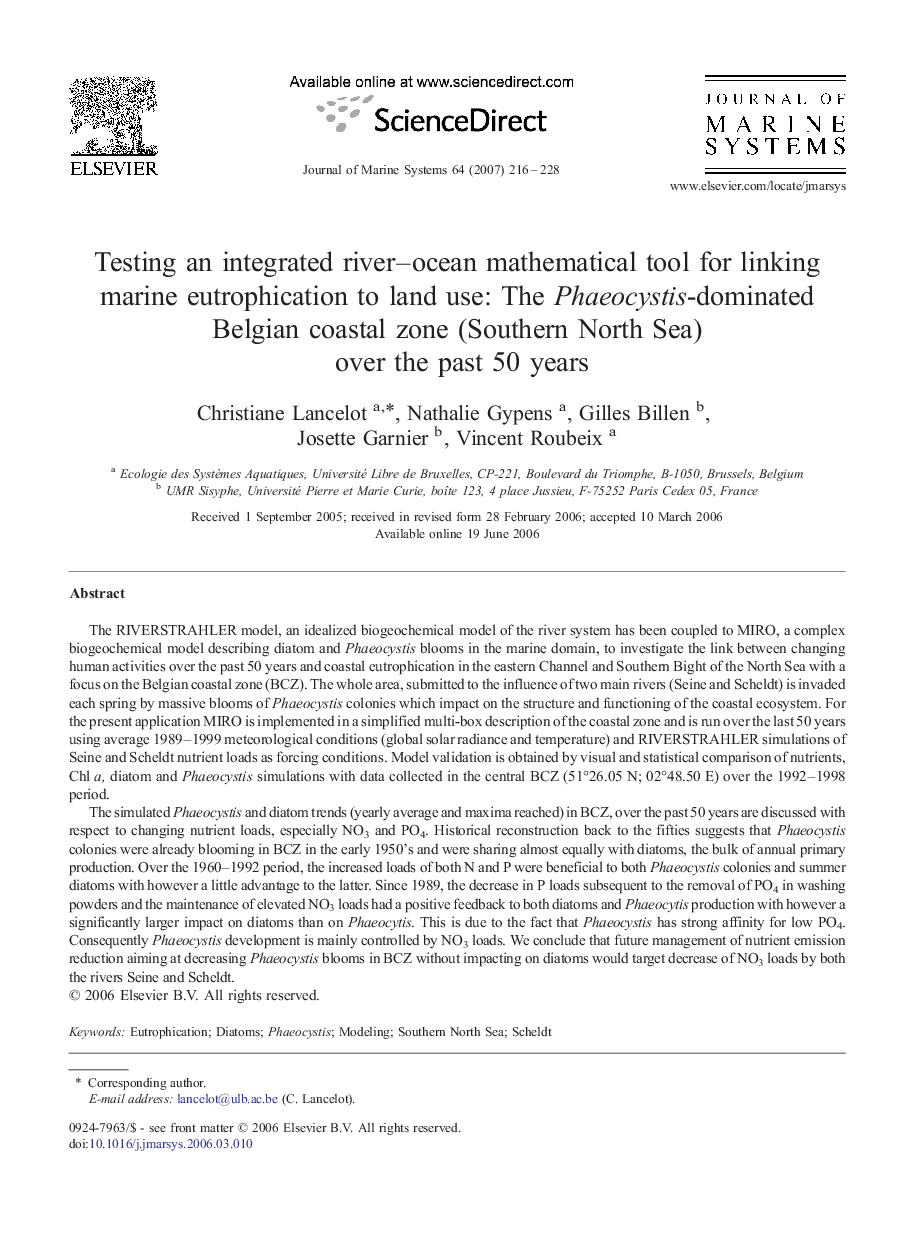| کد مقاله | کد نشریه | سال انتشار | مقاله انگلیسی | نسخه تمام متن |
|---|---|---|---|---|
| 4549440 | 1627359 | 2007 | 13 صفحه PDF | دانلود رایگان |

The RIVERSTRAHLER model, an idealized biogeochemical model of the river system has been coupled to MIRO, a complex biogeochemical model describing diatom and Phaeocystis blooms in the marine domain, to investigate the link between changing human activities over the past 50 years and coastal eutrophication in the eastern Channel and Southern Bight of the North Sea with a focus on the Belgian coastal zone (BCZ). The whole area, submitted to the influence of two main rivers (Seine and Scheldt) is invaded each spring by massive blooms of Phaeocystis colonies which impact on the structure and functioning of the coastal ecosystem. For the present application MIRO is implemented in a simplified multi-box description of the coastal zone and is run over the last 50 years using average 1989–1999 meteorological conditions (global solar radiance and temperature) and RIVERSTRAHLER simulations of Seine and Scheldt nutrient loads as forcing conditions. Model validation is obtained by visual and statistical comparison of nutrients, Chl a, diatom and Phaeocystis simulations with data collected in the central BCZ (51°26.05 N; 02°48.50 E) over the 1992–1998 period.The simulated Phaeocystis and diatom trends (yearly average and maxima reached) in BCZ, over the past 50 years are discussed with respect to changing nutrient loads, especially NO3 and PO4. Historical reconstruction back to the fifties suggests that Phaeocystis colonies were already blooming in BCZ in the early 1950's and were sharing almost equally with diatoms, the bulk of annual primary production. Over the 1960–1992 period, the increased loads of both N and P were beneficial to both Phaeocystis colonies and summer diatoms with however a little advantage to the latter. Since 1989, the decrease in P loads subsequent to the removal of PO4 in washing powders and the maintenance of elevated NO3 loads had a positive feedback to both diatoms and Phaeocytis production with however a significantly larger impact on diatoms than on Phaeocytis. This is due to the fact that Phaeocystis has strong affinity for low PO4. Consequently Phaeocystis development is mainly controlled by NO3 loads. We conclude that future management of nutrient emission reduction aiming at decreasing Phaeocystis blooms in BCZ without impacting on diatoms would target decrease of NO3 loads by both the rivers Seine and Scheldt.
Journal: Journal of Marine Systems - Volume 64, Issues 1–4, January 2007, Pages 216–228